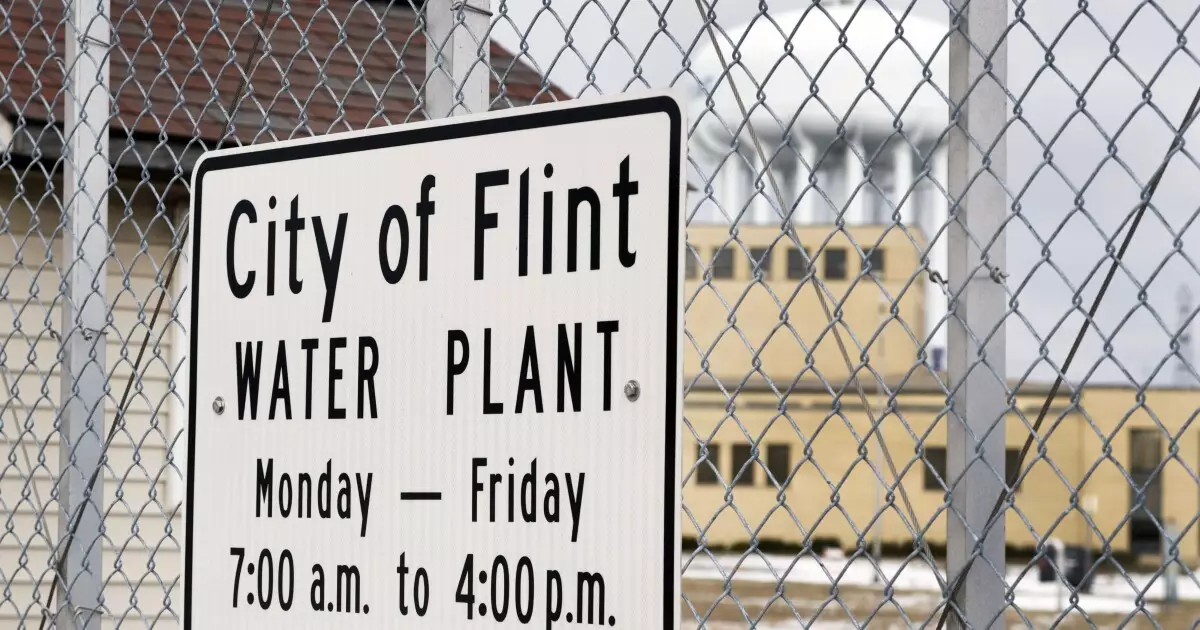On Tuesday, the Biden administration unveiled an unprecedented regulation intended to transform the landscape of safe drinking water in the United States. This new directive, known as the Lead and Copper Rule Improvements, mandates that almost every municipality must replace its lead piping infrastructure within a decade. Speaking to an audience in Milwaukee, President Biden emphasized the federal government’s commitment to public health, questioning its purpose if it fails to safeguard citizens from hazardous substances like lead. This initiative is a significant shift from previous regulations enacted by the Trump administration, illustrating an intensified focus on combating environmental hazards affecting domestic water supply.
The new rule’s timing is particularly poignant as it comes a decade after the notorious water crisis in Flint, Michigan. That situation, marked by disastrous lead contamination due to the corrosive nature of improperly treated water sourced from the Flint River, serves as a haunting reminder of the potential consequences of neglecting infrastructure. Flint’s struggle highlighted the vulnerability of American cities, particularly those in Rust Belt regions, and the necessity for comprehensive action. The Biden administration’s decision to address lead pipe replacement is not merely a regulatory update; it reflects an urgent response to a long-standing problem that has faced minimal resolution until now.
Despite the apparent benefits of the new rules, the proposal has attracted significant criticism, particularly from Republican attorneys general in various states. Their concerns underscore the political divergence over how best to manage environmental regulations and public utilities. The perceived economic implications of the initiative cannot be underestimated; cities are now facing a daunting mandate to locate, inventory, and replace an estimated 9.2 million lead pipes across the country, which comes with a projected cost ranging from $20 billion to $90 billion depending on differing estimates from various agencies.
To assist municipalities in this major undertakings, the Environmental Protection Agency (EPA) has initiated a financial framework that includes $2.6 billion in grants. This funding is intended to flow through state drinking water revolving funds and is part of a larger $26 billion allocation from the Infrastructure Investment and Jobs Act, with specific earmarks for lead-related activities. Notably, these funds are spread across several initiatives, including a direct investment of $15 billion designated specifically for lead removal and an additional $11.5 billion available for related projects.
Nonetheless, the actual financial burden on local governments raises serious concerns. The reality is that many water systems must turn to municipal bonds, federal loans, and state funds to comply with the deadlines imposed by the new rule. Adding to the complexity, some cities such as Chicago, which has one of the highest concentrations of lead pipes in the nation, are lobbying for an extension on the compliance deadline due to the staggering anticipated costs, projected at around $8.5 billion.
The overarching goal of the Lead and Copper Rule Improvements is undeniably public health. The newly established acceptable lead concentration threshold has been lowered to 10 parts per billion, a move supported by extensive scientific research indicating that there is no safe threshold for lead exposure in drinking water. EPA Administrator Michael Regan underscored the urgency of these changes, reinforcing the consensus that immediate action is essential for protecting millions of Americans from lead exposure.
As the initiative rolls out, the next steps will be critical in determining its success. While the government’s willingness to allocate funds demonstrates a serious commitment to public health, the actual implementation and management of these regulations will ultimately define their effectiveness. Public utilities must adapt to meet these new requirements, while ongoing monitoring and assessment will be necessary to ensure that the water remains safe for communities nationwide. The transition towards lead-free drinking water is a formidable challenge, but it represents a vital step toward ensuring the health and safety of future generations.

